This longterm project documents life with the consequences of climate change in clash with shortfalls of urban planing.
Why is the peri-urban area of Dakar, Sénégal is "drowning" annually?
Climate change, migration into cities, irregular settlements and the absence of urban planning is especially disastrous in the suburb. The aftermath of Senegal's torrential rains is sadly familiar for the millions living in and around the capital of Dakar. Streets flood, making traversing Dakar's urban centers near impossible. Houses and business are damaged or destroyed. Vital drinking water sources are contaminated. Dozens fall ill. In all, the near annual flooding has impacted an estimated 100,000 to 300,000 people in recent years, according to one dispatch from the United Nations Office for the Coordination of Humanitarian Affairs.
Many factors, including the city's geology, the changing climate, and shortfalls in urban planning, contribute to the devastation that rocks Dakar during the rainy season. But solutions have been hard to come by in the West African country's largest city. And there is little indication that the city will be better prepared for the next round of rain this coming summer.
Ndox was conceived in tight collaboration with rapper Goormak, visual artist Cheikh Diallo and journalist Judth Wyder.
The project was exhibited in a presentation including their work along side my plastered photographs, videos and audio installation. The work captures the struggles that come with the rains. and the resilience and unity the community shows in the face of an ongoing state of natural disaster: This is not a simple story of disaster from Africa. The roots of the problem,and possible improvements, are complex, with regional, cultural, and political considerations.
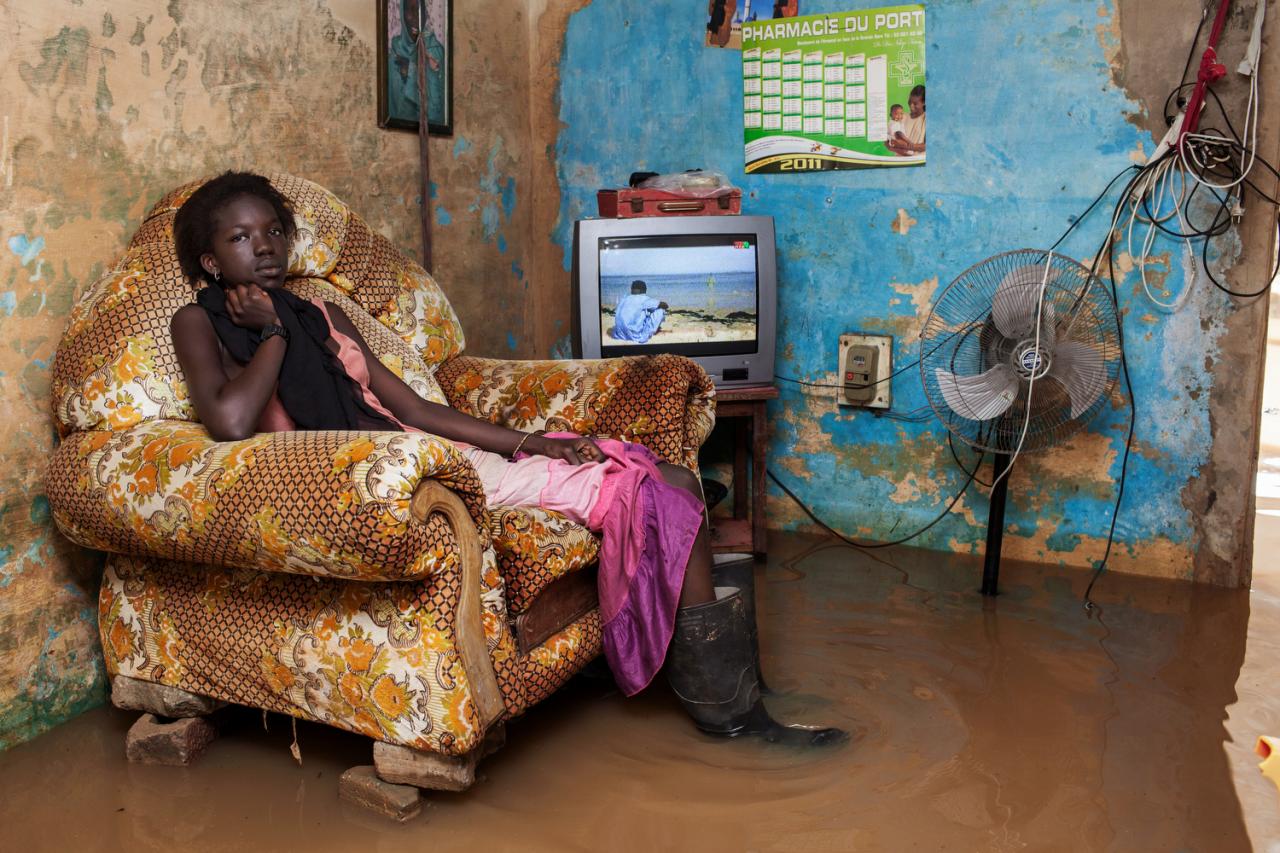
Fanta, 18, feet in Wellington boots, sits tight in Thiaroye. The African research initiative “Africa talks Climate" came to the conclusion, that although the Senegalese population is aware of the reality of climate change and the deterioration of their environment, little is known about their causes.
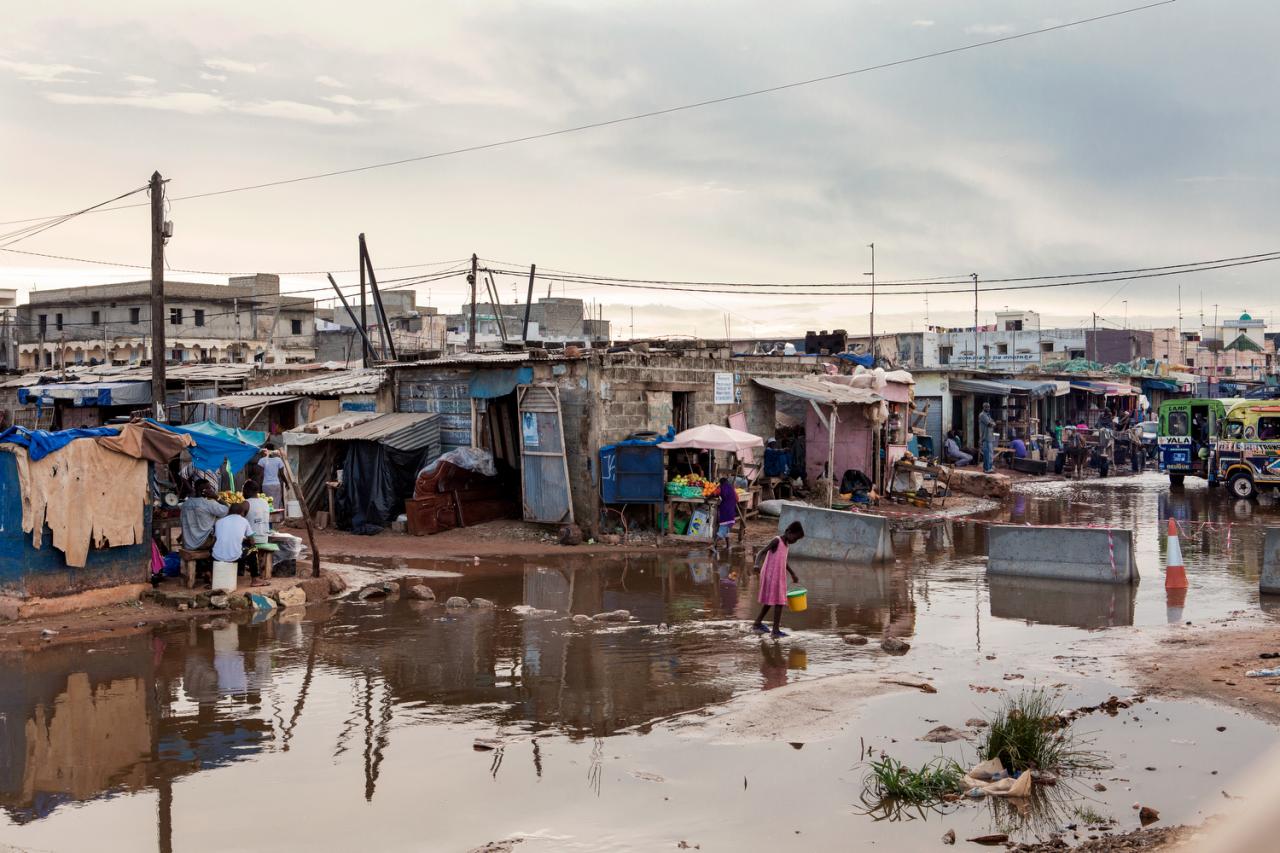
Every year streets in the urban catchment areas change into rivers during the rainy season from the end of July until the end of September.
Senegal has 13 million people of which 43 % live in the city peripheries, where irregular settlements are very common
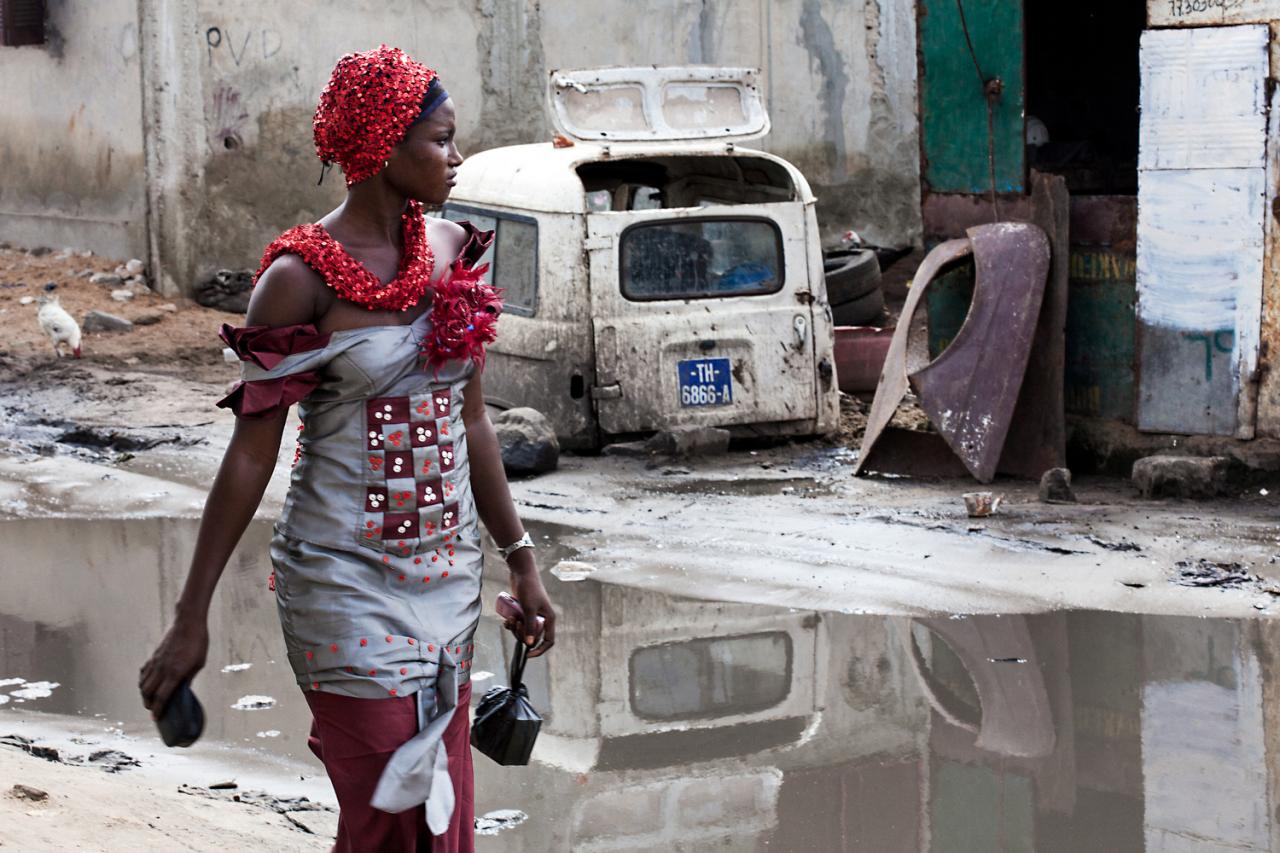
Those affected who left their ruinous houses often say that they have not been looked after in the new place, and that their situation has rather deteriorated. Those who stick it out in the critical areas conclude that it is better to stay where they are.
"Many homes in the suburbs have sunk so deep into the sand over the years that the windows are now leveled with the ground. During the floods, life is a constant set of obstacles, demanding new creative strategies daily," Rothenberger added. "Rice bags filled with sand are laid on the paths. Rooms fill with water. Sleeping places are raised up on bricks and eventually moved to the roof along, with an improvised kitchen. Dangling cables secured. Budgets are tight. Incomes drop with business running slow or dropping altogether. Traffic breaks down and employees lose their jobs in the city center. Expenses rise: for medicine, temporary relocations, materials to secure the access to the house, and the home itself. Desperate money requests are made to family members abroad. ... Everyone knows, that each abandoned home turns into a humid waste dump and perfect breeding ground for mosquitos and diseases.“
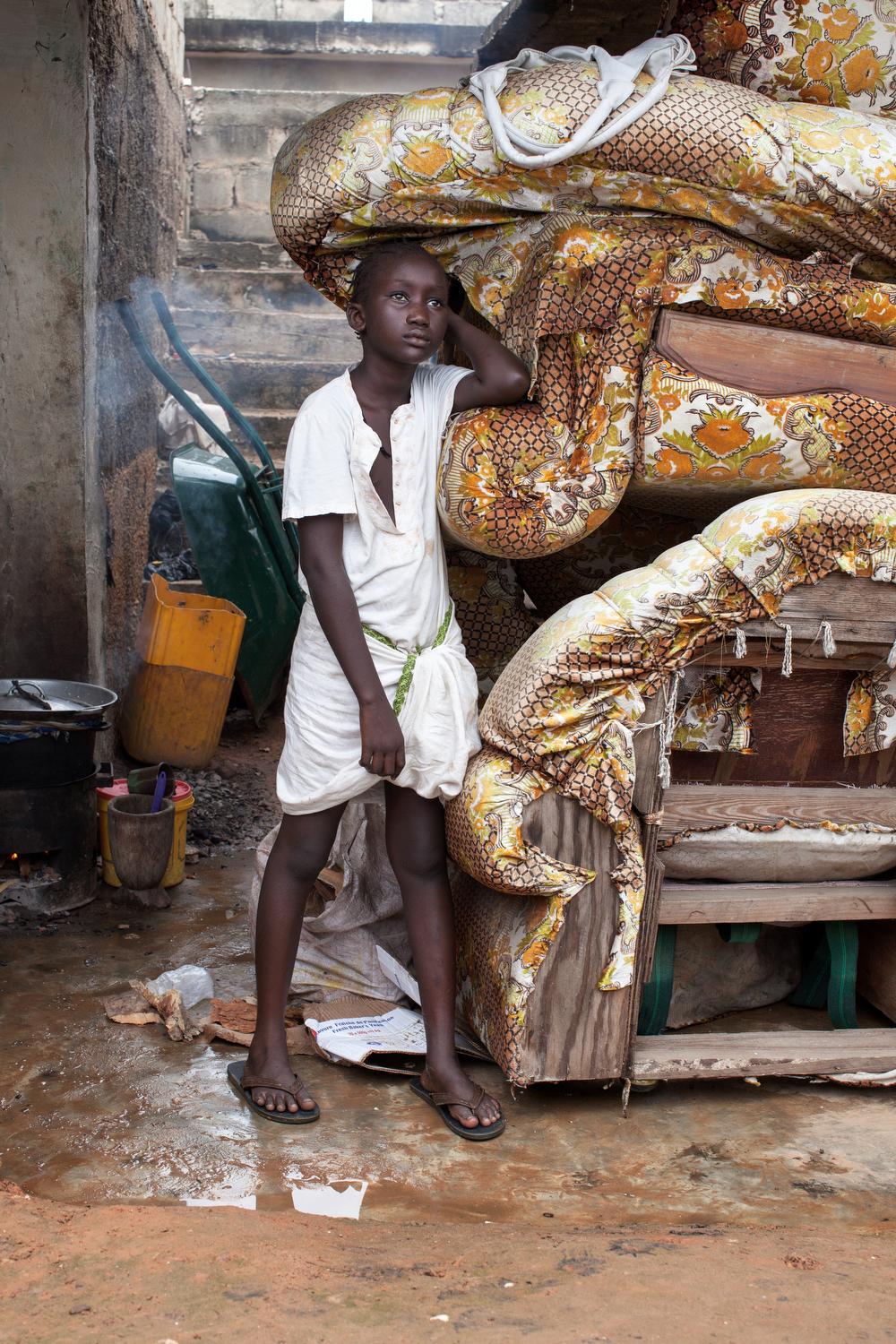
In Dakar, one sociocultural phenomenon is more in evidence than elsewhere. A father and husband is expected to build a house for his family in order to be fully respected in society. This goes to the extent that some feel it is a better idea to build a house in a high-risk area, rather than not to own a house at all.
Schools in the suburbs show deserted desks and benches, blackboards filled with knowledge no one can afford to care for, and notebooks float on the water surface. The principal gives a frustrated speech about a failed system, which he blames no less on each single citizen, than he does on the state altogether.
In many African cities concepts of urban growth are lacking, this too is the case in Dakar. In 1967 the Senegalese government proclaimed a construction ban in marshland zones, but this has been widely ignored.
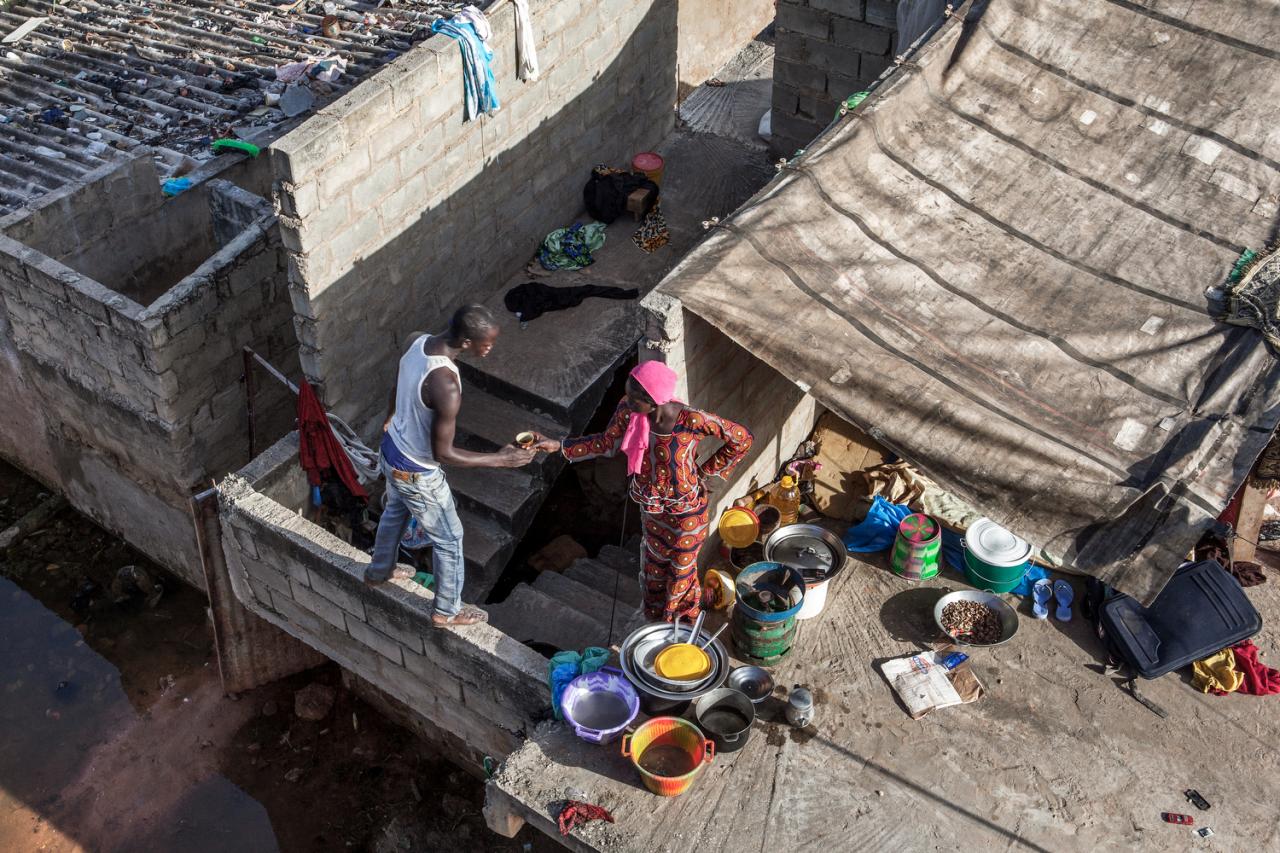
Despite neighborly help, Aida and her family were forced to flee onto the roof to escape the water. As a single mother, she was unable to pay the bill for the pumping out of the water and had to leave the house. Here, she hands a neighbor a cup of tea.
Just before the rainy season, many house owners invest their last penny in piles of sand, which is heaped on the floor of the house when water pours in. The fact that the space between the floor and the ceiling continuously shrinks over the years, letting the house slowly sink into the ground, is completely ignored.
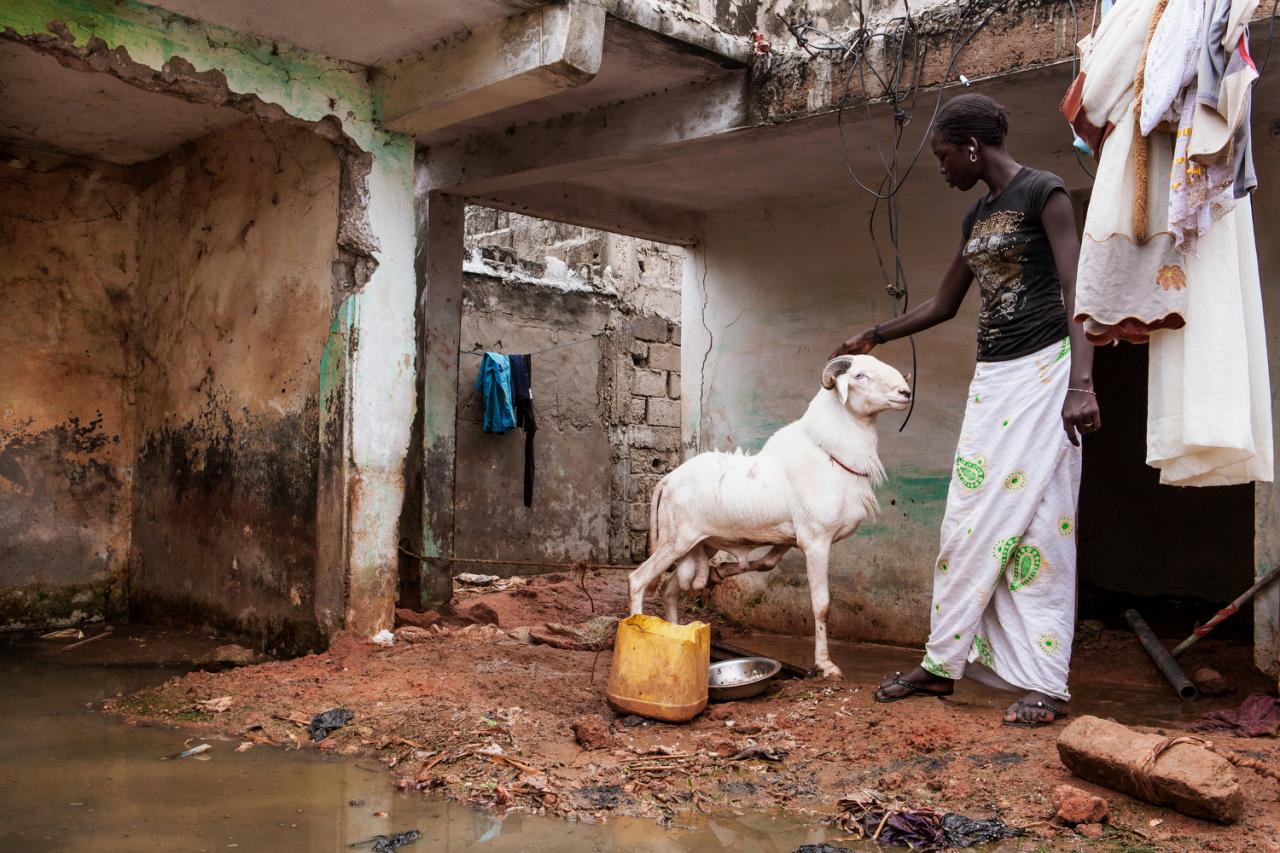
Fanta facing the challenges of the rain season in her home a few days before the big feast ending Ramadan. In the '70s and '80s, the Sahel region suffered severe drought. Since the end of the '90s, devastating rainfalls have increased during the rainy periods. The ones hit most by global change are inhabitants with limited incomes in the suburbs such as Pikine, Guédiawaye, and Rufisque, where the ongoing coastal erosion and the rising sea level have aggravated the situation.
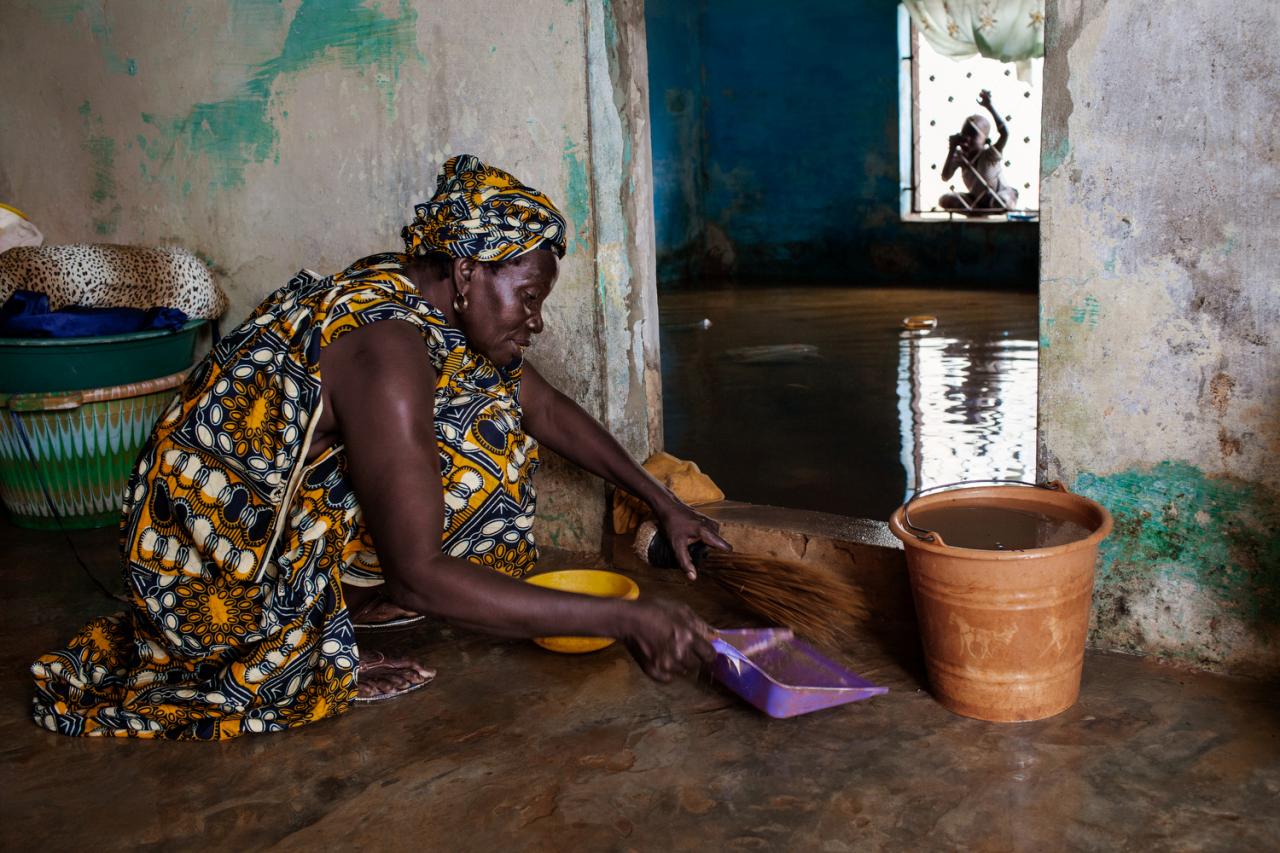
Awa Nguere, age 54, lost her fight against the water in Thiaroye:
as a market woman she earns the whole family’s income. Her sons are unemployed. Her deceased husband acquired the house believing that the object was outside the danger zone. Meanwhile it borders on two house ruins that are filled with standing water and rubbish the whole year round.
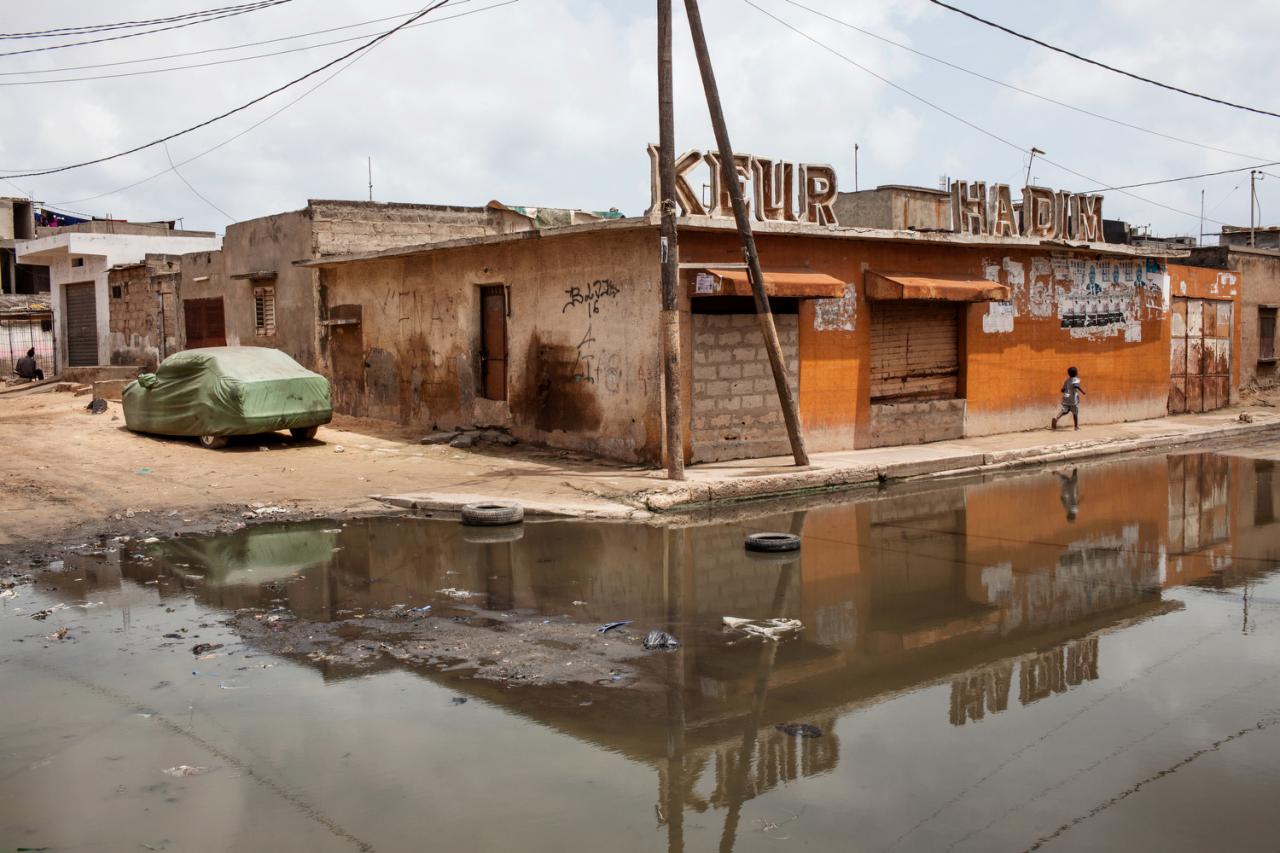
In the local language Wolof, the word "keur" means house. It is pronounced in the same way as the French "coeur," meaning heart. The "keur dakarois" affected by the damages from the flood are full of cracks. They plunge families headlong into disaster, instead of providing a safe roof over their heads.
An old Senegalese proverb says: “Magg dafa fonk alalame" which means “the old man clings to his possession." In his heart, no Senegalese “Chef de famille" I’ve spoken to, can accept that water has long taken over his house, not even in an emergency. Despite no available alternative, he is unwilling to leave this vital asset to its fate. This is because he reckons in his despair that what can not be must not be.
I focused not solemnly on the rainy season, but also on the dry months of the year, the peak season for construction works. During the dry periods, the problem of the floods is minimized, but far from eliminated. The standing water remains all year and is omnipresent.
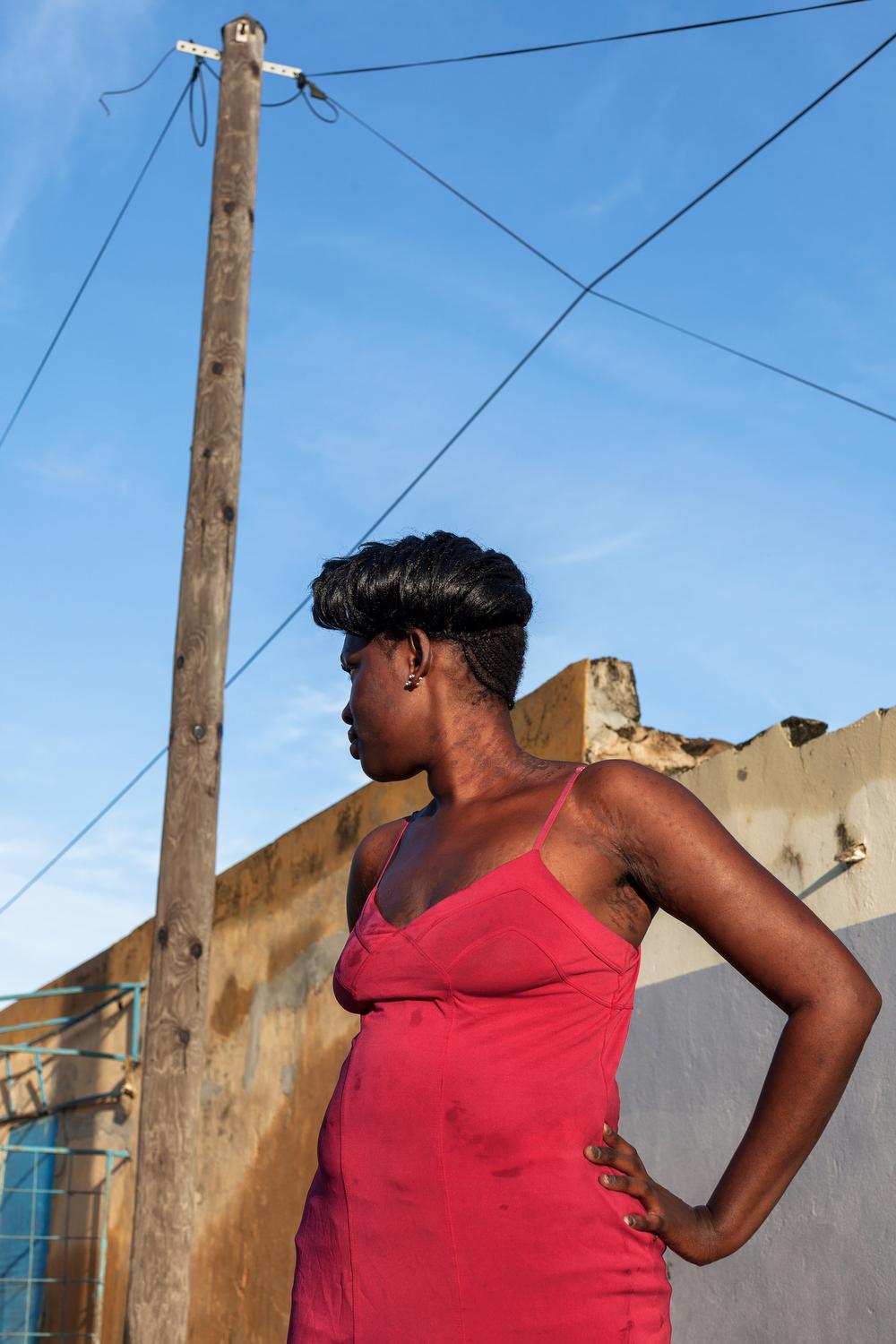
In many African cities, concepts of urban growth are lacking, this too is the case in Dakar. In 1967, the Senegalese government proclaimed a construction ban in marshland zones, but this has been widely ignored.
Encircled by water: “the lack of capital reinforces the experience of incapability. People are chained to one place “the French sociologist Pierre Bourdieu wrote.
Experts estimate that it will take five if not 10 years until the Senegalese government will be able to handle the flood situation, taking climate change and lacking urbanization plans into account.
2_ndox from Flurina Rothenberger on Vimeo.